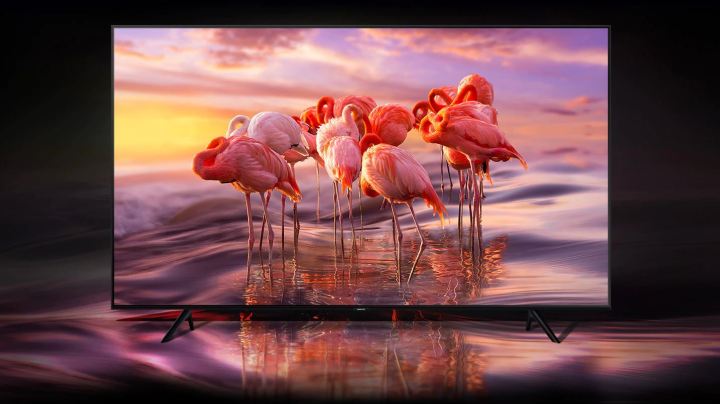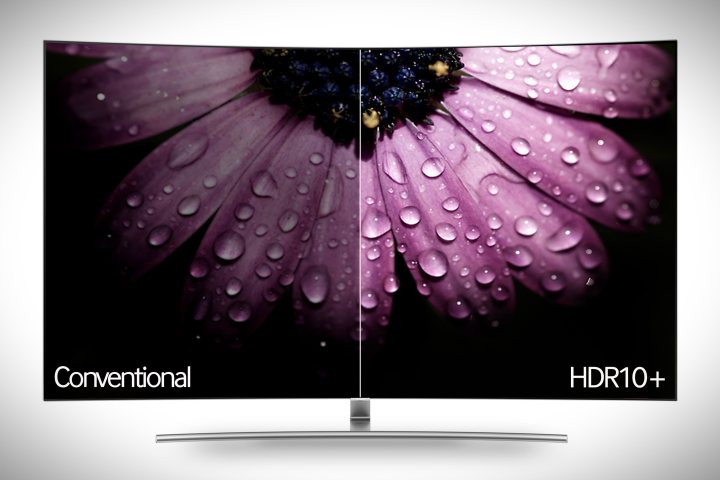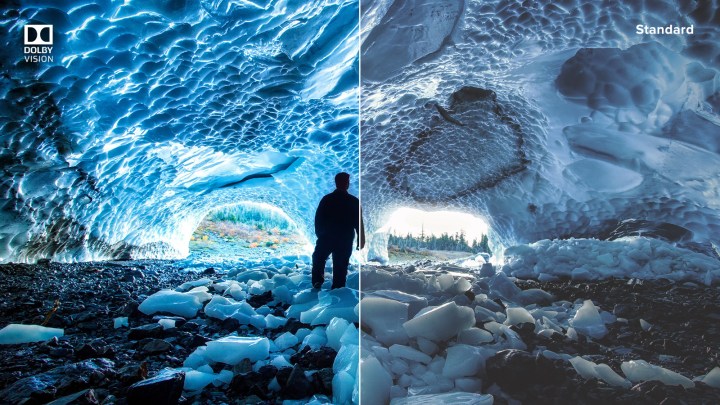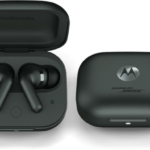
Not long ago, High Dynamic Range (HDR) TVs were exotic devices. They were priced higher than other TVs and there wasn’t a lot of HDR content to watch. But now, in 2023, HDR is the norm. The vast majority of new TVs support the technology, and HDR content can be found on almost every streaming service, tons of Blu-ray discs, and even some broadcast TV and cable channels.
But just because HDR is everywhere, that doesn’t mean you don’t need to know what it is, how it works, or how to experience it. As it turns out, not all HDR TVs are created equal, and neither is all HDR content. And since HDR TVs need a compatible source of HDR content in order to give you the best picture quality, it’s definitely worth boning up on all the HDR ins and outs. But don’t worry, we’ll make it as painless as possible.
What is an HDR TV?
An HDR TV is a TV (usually with 4K resolution, but not always) with built-in support for one or more HDR formats. HDR formats — as opposed to standard dynamic range or SDR — can provide a much brighter image with a higher level of contrast between light and dark areas on the screen, while also taking advantage of more colors, to create a much more realistic image. In short, HDR looks way better than SDR.
Don’t take our word for it. Check out an HDR TV (that’s displaying HDR content) side-by-side with a non-HDR 4K TV at your local retailer and we guarantee you will be impressed. The difference can be like night and day.
Further reading
HDR: The basics

What do you need for HDR TV?
Before we go any further, let’s set the stage. To experience HDR on a TV, you need at least two things: A TV that supports one or more HDR formats and the actual content that is produced using one (or more) of those HDR formats. A third, optional part, is a playback device like an Ultra HD Blu-ray player or media streamer that is HDR-compatible.
We say optional because most HDR TVs are also smart TVs, which means they already have apps for services like Netflix and Amazon Prime Video. If you’ve got an HDR TV and that TV can stream HDR content from your favorite streaming service, then that’s all you really need.
Are all HDR TVs equal?
No, not by a long shot. You’ll find HDR TVs at tons of different prices and sizes, and picture quality can vary dramatically. We’ll get into the specifics in a moment, but all of HDR’s benefits (brightness, contrast, colors, etc.) can only be appreciated if your TV can fully reproduce them. A gorgeous 4K HDR stream of Star Wars: The Empire Strikes Back from Disney+ simply won’t look as good on a $500 55-inch 4K HDR LED TV as it will on a $1,200 55-inch 4K HDR OLED TV or QLED TV.
Think of it like high-octane gasoline: You can put that same fuel in a Hyundai or a Ferrari, but what the Hyundai does with that fuel is nothing like what the Ferrari can do with it. A high-quality HDR TV will make HDR content look its best.
So what’s so special about HDR anyway?

HDR content (when viewed on a high-quality HDR TV) looks better than standard dynamic range (SDR) content because it is brighter and more colorful. You don’t realize it until you see it next to HDR, but SDR content — the kind we’ve been watching for decades on TV, DVDs, and older Blu-rays — isn’t all that vibrant. HDR ramps up all of the elements we can see so that they’re more lifelike, or at least more like the kind of images you’d seen in a movie theater.
After you’ve watched HDR content, going back to SDR can feel dull and lifeless.
Better brightness, better contrast
HDR increases the contrast of any given on-screen image by increasing brightness. Contrast is the difference between the brightest whites and darkest blacks a TV can display. It’s typically measured as a ratio, e.g. 1:2,000,000, which in this case would mean that that TV is capable of displaying a bright area that is 2,000,000 times brighter than its correspondingly darkest area.
By increasing the maximum amount of brightness (usually measured in nits) for a given image, HDR TVs are capable of a higher contrast ratio. LED TVs in particular benefit from this increased brightness, as they can’t show blacks as deep and dark as OLED TVs, so they need to get brighter to achieve the same or better contrast ratios. For more on the differences between OLED and LED TVs, check out our full explainer.
As an aside, if you ever see a TV (usually an OLED TV) market itself with the words “infinite contrast,” that’s a clever way of saying that if the darkest part of the image is perfectly black then technically speaking, the brightest part of the image is infinitely brighter, even if it’s not very bright at all. Whether you buy into this reasoning or not, an OLED TV’s ability to kill all light coming from an individual pixel does give it the best black level currently possible.
Standard dynamic range TVs generally produce 300 to 500 nits at most, but in general, HDR TVs aim much higher. Some top-tier models can display upward of 2,000 nits of peak brightness for HDR highlights. Sony has shown off a prototype TV capable of a whopping 10,000 nits of peak brightness.
Brightness, more than any other attribute, is what TVs need to make HDR images come alive, which is why you should always check the peak brightness specs of a new HDR TV. Look for a TV that can deliver at least 1,000 nits to get the most out of today’s HDR content.
More colors, too

4K TVs equipped with HDR technology almost always possess the ability to display Wide Color Gamut (WCG). WCG provides a larger color palette than what HDTVs have been able to show in the past. 8-bit color, with its millions of shades, used to be the norm, but WCG offers 10-bit color for billions of shades.
HDR content takes advantage of WCG by encoding videos using more of those available colors. When you watch HDR material on an HDR TV, these additional colors add to realism — because they better match what the human eye is capable of seeing in nature — but they also improve things like gradients, where you have a single area on the screen that shifts from one end of a color shade to another, like bright red to dark red. More color shades mean these shifts will appear smoother.
The many versions of HDR
As we mentioned above, there isn’t just one HDR format. In fact, at the moment, there are five competing HDR formats: HDR10, Dolby Vision, HLG, HDR10+, and Advanced HDR by Technicolor. If you’re worried that this will lead to a format war, akin to what we saw with VHS vs Beta or Blu-ray vs HD-DVD, you’re right — there is a risk this could happen. However, the risk is lower this time because many of the top TV brands support all of the most common HDR formats, and backward compatibility has been included from the start. There are some exceptions though, which we’ll cover in a moment.
For now, let’s take a look at each HDR format to see how they differ.
HDR10
Though not the first HDR format to emerge, HDR10 is by far the most widely used. If you have an HDR TV, it supports HDR10, even if it doesn’t support any other HDR formats. HDR10 is the de facto HDR standard because it’s open-source and royalty-free, which means any manufacturer can implement it on its TVs without a licensing fee. HDR10 allows for many of the improvements to image quality that HDR makes possible, but it is not as sophisticated as some of the other HDR formats.
HDR10 uses 10-bit color, which provides for billions of colors, versus the millions of colors used by the predominantly 8-bit color of SDR. Currently, 10-bit color is more than adequate for HDR, because no TVs on the market are capable of showing more than 10-bit color. From a brightness (and thus contrast) point of view, HDR10 provides for a theoretical maximum of 10,000 nits.
We say “theoretical” because not only are TVs with this kind of brightness almost impossible to find, actual HDR content comes nowhere close to this brightness level. However, HDR10 has no bottom limit on brightness, and that means some HDR10 content can be created at levels as low as 400 nits, which will barely feel brighter than SDR.
HDR10 uses metadata that rides along with the video signal down an HDMI cable and allows the source video to tell a TV how to display colors. HDR10 uses a fairly simple approach, sending metadata once at the start of a video. This is known as “static” metadata and it’s an effective, low-bandwidth way of adding the extra information required by HDR, but it’s also limited compared to other approaches as we’ll see with Dolby Vision.
Dolby Vision
Before there was HDR10, there was Dolby Vision. The relationship is surprisingly similar to the old Betamax and VHS videotape standards of the late 70s and 80s. Sony’s Betamax was undeniably superior in many ways to VHS, but because of Sony’s insistence on high licensing fees, it eventually lost out to the less capable but far more affordable VHS.
Dolby Vision is a proprietary HDR format developed and licensed by Dolby Labs. Like HDR10, it can support brightness up to 10,000 nits, but the reason most people find Dolby Vision video punchier than HDR10 is that Dolby Vision sets a minimum brightness of 1,000 nits when you create a video using this format.
Dolby Vision has a technical advantage over HDR10 from a color space point of view: Dolby Vision supports 12-bit color which expands the number of available colors to a huge 68 billion. For now, that’s strictly a potential advantage — no current HDR material is mastered using 12-bit color — although when that material does eventually arrive, some of today’s best TVs will be able to display it.
Where Dolby Vision’s benefits can be appreciated immediately is its use of dynamic metadata, which means that every scene and every frame of video can be adjusted with color and contrast info. It’s a huge amount of additional information and the result is content that looks far better than HDR10 and comes closer to what a filmmaker created when they produced their movie or show.
Finally, the Dolby Vision format contains information about the equipment that was used to create the master recording. Using this info, your TV can then recalibrate some of its display settings to offset the differences between the mastering equipment and your home TV.
Because of the licensing fees associated with Dolby Vision, not all HDR TVs support this format. Only those that specifically carry the Dolby Vision logo are compatible. Likewise, not all HDR content is available in Dolby Vision. To see true Dolby Vision HDR, you need both a Dolby Vision source (like UHD 4K Blu-ray, or Dolby Vision streaming video) and a TV (and possibly a streaming device) that can show it.
These days, it’s rare to find a decent HDR TV that doesn’t support Dolby Vision, with one very big exception: Samsung TVs have never included Dolby Vision compatibility, and we don’t see any sign that the company is about to reconsider its position.
Keep in mind, if you like to watch streaming media through a set-top box, not all of them support Dolby Vision. Roku’s lineup of streaming devices is a notable example. Only the flagship Roku Ultra 2022 supports Dolby Vision; the rest are limited to HDR10.
On the content side of the equation, you will find wide and growing support for Dolby Vision on 4K UHD Blu-rays, streaming media services like Netflix, Amazon Prime, Apple TV+, and Disney+, and on many TVs and devices from brands like LG, Vizio, TCL, Sony, and Apple.
HDR10+

Samsung’s decision to boycott Dolby Vision might strike you as odd, but there’s a method to its madness. Dolby Vision’s licensing fee requirement prompted a group of companies led by Samsung to develop an open-source HDR format that shares most of the advantages of Dolby Vision but without the fees. HDR10+ is that format. Like Dolby Vision, it supports a maximum brightness of 10,000 nits, up to 16-bit color, and dynamic metadata for more accurate colors and contrast in every scene or even every frame.
HDR10+ can’t claim Dolby Vision’s additional information concerning the gear that was used to do mastering, but that’s not a deal-breaker.
A much tougher hurdle that HDR10+ must overcome is content availability and manufacturer support. TV support is improving quickly, with compatible models available from Samsung (naturally), Panasonic, Toshiba, Amazon, TCL, and Hisense. But that still leaves two giants — LG and Sony — as standouts. Apple now supports HDR10+ on its most recent Apple TV 4K, but previous versions did not.
Streaming support remains spotty. While almost all streaming services support Dolby Vision, as of 2023, only Apple TV+, Hulu, Amazon Prime Video, Paramount+, YouTube, and Google Play Movies support HDR10+.
Other contenders
Dolby Vision and HDR10 (and to a lesser extent, HDR10+) are currently seen as the two biggest players in HDR, but there are two other HDR formats we should mention. Hybrid Log-Gamma (HLG) is a format born from a partnership between the BBC and Japanese broadcaster NHK, developed with an emphasis on live broadcasting, though it can also be used for prerecorded content.
Unlike HDR10, HDR10+, and Dolby Vision, HLG doesn’t use metadata, which could work to its advantage in some ways, depending on how TV manufacturers implement it. For a more thorough look into the topic, read our complete guide to HLG, which discusses both what it offers right now and what it could offer in the future.
Technicolor was an early player in HDR, and at CES 2016, the company announced a partnership with Philips to create a new format. Like HLG, Advanced HDR by Technicolor aims to be backward compatible with SDR displays, which the companies said in a press release “will simplify HDR deployments for distributors, who will be able to send one signal to all of their customers, regardless of which TV they have.” This likely explains why Technicolor Advanced HDR is included in the new ATSC 3.0 broadcast standard.
One intriguing aspect of Advanced HDR is that it promises to take SDR content and “upscale” it to HDR, presumably in the same way that non-4K content can be upscaled by 4K TVs. So far, we have yet to see any content appear in this format.
So what do we watch?

These are the easiest ways to get your HDR fix.
Ultra HD Blu-ray
Offering the highest-quality delivery method for a top-tier HDR experience at home, UHD Blu-ray allows for 4K UHD resolution, HDR and color expansion, alongside surround sound formats like Dolby Atmos and DTS: X.
Ultra HD Blu-ray releases with HDR have become the new standard, and HDR10 is currently the leader there, though Dolby Vision is working hard to catch up. Which discs do HDR best? Check out our picks for the best 4K UHD Blu-ray releases.
Netflix
It probably comes as no surprise that Netflix was one of the first companies to announce HDR support. Its first HDR title, Marco Polo, was joined by a number of other Netflix originals such as Altered Carbon, and the third season of Stranger Things. HDR titles from Netflix are currently available in HDR10 and/or Dolby Vision.
Amazon Prime Video
Amazon also announced HDR support fairly early on. A number of HDR films are available via Amazon Prime Video, along with many of its original series, including Jack Ryan (in Dolby Vision), Man in the High Castle, Transparent, Mozart in the Jungle, and The Marvelous Mrs. Maisel. It’s likely that most if not all of Amazon’s future original programming will also be available in HDR.
Amazon supports all three major flavors of HDR: HDR10, Dolby Vision, and HDR10+ — making it one of the few streaming services to do so.
Disney+

From its first day of streaming, Disney+ has been heavily dedicated to HDR content. It’s the only place you can watch all of the Star Wars movies in both 4K and HDR. Many of its headlining movies and shows like the Marvel Cinematic Universe and the original The Mandalorian are presented in Dolby Vision and HDR10 so no matter which formats your HDR TV supports, you’ll get the best possible picture quality.
Curiously, there has been some criticism leveled at Disney for its handling of The Mandalorian’s Dolby Vision treatment, with experts saying it’s not bright enough. However, this might be a choice on the part of the show’s creators — HDR formats may provide brighter and more colorful images, but that doesn’t mean storytellers will necessarily take advantage of them.
iTunes
Alongside the 2017 launch of the Apple TV 4K, the iTunes Store was updated to offer movies and TV shows in HDR. Both HDR10 and Dolby Vision titles are available, with a handy icon flagging which movies use which format.
One perk for those entrenched in the Apple ecosystem is that eligible iTunes titles you already own are automatically updated to the HDR version, so you don’t have to buy a movie or TV show twice. If you’re an Apple fan who just bought a new 4K HDR TV and an Apple TV 4K, this could be a great way to show them off without spending more money.
Apple TV+
You’ll find that almost all of the content on Apple TV+ is in HDR and supports HDR10, Dolby Vision, and HDR10+. There’s nowhere near as much content as you’ll find on other services, but what Apple TV+ lacks in quantity, it makes up for in quality.
Google Play Movies & TV
Google Play also added HDR movies and TV shows in 2017. It now offers HDR content in all three major formats, though not every device is capable of displaying them.
Naturally, there’s excellent support for the Chromecast Ultra, Android TVs, and Google TV-equipped TVs, but you may also be able to access content via the YouTube app on other platforms, or by using AirPlay from an Apple device to an Apple TV.
Vudu (including FandangoNow)
One of the earliest providers of 4K programming, Vudu was also quick to offer HDR support. The service has one of the largest libraries of 4K movies and TV shows available for rental or purchase, many with HDR as well as Dolby Atmos surround sound.
For some time, Vudu’s HDR offerings were only available in Dolby Vision. In November 2017, the company announced complete support for HDR10, making its library of HDR titles available on a far greater range of devices.
YouTube
It doesn’t share much in common with the above services, but YouTube does stream in HDR. YouTube supports streaming in HDR10 and HDR10+, but you may not find much in the way of HDR10+ content right now. Google hasn’t said much about whether YouTube will ever support Dolby Vision.
In terms of content, there are a whole lot of videos showing off the power of HDR — there’s even a dedicated HDR channel. This is great for showing off your TV, and down the road, we’re sure there will be more content making use of it. For now, it’s mainly a fun novelty.
What about gaming?

While most guides focus on passive viewing experiences for HDR, game consoles are an important part of the discussion. With the PlayStation 5 and Xbox Series X and S, Sony and Microsoft have thrown their hats into the HDR ring, but it can be much more complicated to access all that sparkly goodness than you might expect.
Xbox Series X and S, Xbox One S, Xbox One X
Both the Xbox Series X and S offer native support for HDR10 and Dolby Vision. The latest Microsoft hardware also comes packaged with a feature called Auto-HDR. This upscales SDR images to appear closer to true HDR quality. In order to take advantage of your latest Xbox’s upconversion, you’ll want to make sure your TV is set to Game mode. You’ll then want to go into your system settings to calibrate your TV image. Select Power and System > Settings > General > TV and Display Settings. Then, select Calibrate HDR for Games.
Xbox streaming in HDR works with Netflix, Amazon Prime Video, Vudu, Plex, and myTube. but Microsoft has taken things a step further by including an Ultra HD Blu-ray drive built-in, meaning you get twice the bang for the buck — especially considering the Xbox One S is priced competitively with many UHD Blu-ray players.

PlayStation 5 and PlayStation 4 Pro
The PlayStation 5 includes onboard HDR support, but it can be a bit buggy. Many PS5 owners have reported their TVs displaying in non-HDR formats even when TV inputs and system settings are correct. Fortunately, there are a few ways to try and work around the issue.
Unlike Microsoft’s first effort, Sony did add HDR to the original PS4, but without 4K Ultra HD support. That means it won’t be very helpful as a streaming device for HDR, especially since apps like Netflix and Amazon currently only support HDR alongside 4K.
The PlayStation 5 and PlayStation 4 Pro feature HDMI 2.0a and HDCP 2.2, which allows them to offer both 4K and HDR10, but they don’t offer Dolby Vision. PlayStation apps for Amazon and Netflix support 4K and HDR.
Unlike the Xbox One S and Xbox One X — and this is key for home theater enthusiasts — Sony didn’t include a UHD Blu-ray drive in the PS4 Pro (even though Sony invented Blu-ray). That’s quite surprising considering how much the built-in DVD drive aided sales of the PlayStation 2, while the PlayStation 3 helped Sony’s Blu-ray format win the high-definition hardware war over HD-DVD. Fortunately, the standard version of the PlayStation 5 does come with a 4K UHD disc drive (the cheaper, digital edition doesn’t).

Native 4K gaming is possible on the PS4 Pro, though it’s a complicated situation, as some games are native while others are upscaled. HDR gaming is supported for a variety of titles, including Uncharted 4: A Thief’s End, The Last of Us: Remastered, Thumper, and many more.
For VR gaming, you’ll need to pay attention to the PlayStation VR version you’re using. The original PSVR didn’t allow HDR passthrough, which meant that even if you were playing an HDR VR game, the signal that was sent to your TV would be stripped of its HDR information. The PSVR 2 solves this problem by allowing HDR passthrough.
Worth the hassle
So there you have it. High dynamic range is a lot more complex than just three little words. But it’s also a very exciting technology that will pull us even deeper into the spectacular movies and TV series we love to watch, creating more brilliantly realistic images than ever. If you’re wondering if the next TV you buy should be HDR compatible, our answer is yes, though we caution to make sure the TV also offers peak brightness at levels that will be able to make HDR pop.
If you’re wondering how to get the best HDR TV your money can buy, be sure to have a look at our TV buying guide and our list of the best TVs on the market.
Editors’ Recommendations



